Finance
The projected costs for the construction were projected at 9125 Million Dirhams, excluding costs for buying or acquiring land. [2] but the final costs came to 10.800 MDH, which comes to 33,44 MDH per kilometer road [1]
The ADM signed an agreement with the Hassan II Fund for Economic and Social Development for a financial injection of the ADM of 2000 MDH in 2005 and invited external investors for participation.
The main investors are: (all in Million Dirham, unless other stated) [2]
- BID - Islamic Bank for Development - 1080
- FADES -Arab Fund for social and economic development - 1800
- FKDEA- Kuwait Fund for Arab and Economic Development - 900
- a fund related to the OPEC - 225
- FEMIP- European Fund Euro-Medit. Inv&Partnersh. - € 180 M
- FAD - Fonds d’Abou Dhabi - 225
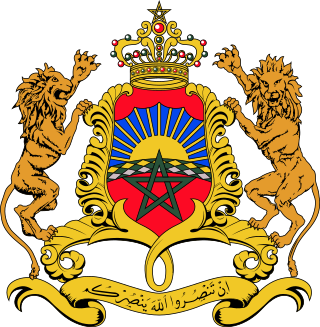
Politics of Morocco take place in a framework of an official parliamentary constitutional monarchy, whereby the prime minister of Morocco is the head of government, and of a multi-party system. Executive power is exercised by the government. Legislative power is vested in both the government and the two chambers of parliament, the Assembly of Representatives of Morocco and the Assembly of Councillors. The Moroccan Constitution provides for a monarchy with a Parliament and an independent judiciary.

There are around 56,986 km (35,409 mi) of roads in Morocco. In addition to 1,808 km (1,123 mi) of highways.

Morocco's network of motorways is administered by the state-owned company Autoroutes du Maroc (ADM). It runs the network on a pay-per-use basis, with toll stations placed along its length. The general speed limit is 120 km/h.

The Casablanca–Rabat expressway, designated A1, was the first expressway to be built in Morocco, with construction starting in the 1970s. It was only completed in 1986 after a 7-year halt.

The Rabat–Tangier-Med expressway is an expressway in Morocco. It begins in Morocco's capital of Rabat, and connects to the northern port of Tanger-Med. The expressway's identity marker is "A5".

The Rabat–Fes expressway is an expressway in Morocco; its designated identity marker is A2. Its total length is 190 km.
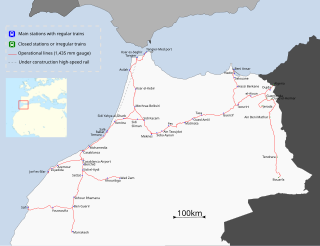
ONCF is Morocco's national railway operator. ONCF is a state-owned company that is under the control of the Ministry of Equipment, Transport and Logistics and is responsible for all passenger and freight traffic on the national railway network. The company is also responsible for building and maintaining the rail infrastructure.

Taza-Al Hoceima-Taounate was formerly one of the sixteen regions of Morocco from 1997 to 2015. It was situated in northern Morocco. It covered an area of 24,155 km² and had a population of 1,807,036. The capital was Al Hoceima.

The Société Nationale des Autoroutes du Maroc (ADM) is Morocco's national authority for the management of over 1400+ km of Moroccan expressways. ADM is based in Rabat.

In Morocco, the 75 second-level administrative subdivisions are 13 prefectures and 62 provinces. They are subdivisions of the 12 regions of Morocco. Each prefecture or province is subdivided into arrondissements, municipalities or urban municipalities in other urban areas, and districts in rural areas. The districts are subdivided into rural municipalities. One prefecture (Casablanca) is also subdivided into préfectures d'arrondissements, similar to districts (cercles) except they are grouping a few arrondissements instead of rural municipalities.
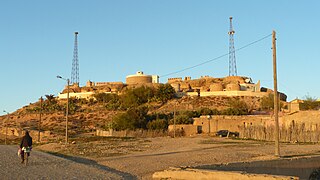
Taourirt is a town in Taourirt Province in the northern part of Morocco. It is located in the Oriental region about 100 km west to the city of Oujda.
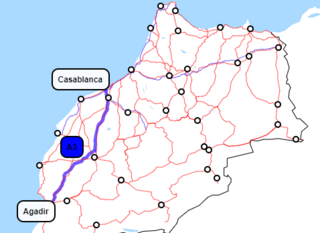
The Autoroute Casablanca–Agadir is a new main road in Morocco. Building began in 2000 and the road was inaugurated on 21 June 2010 by Prince Moulay Rachid.

The N2 road is a national road in Morocco which connects Tangier in the northwest of the country with Oujda in the Northeast.

The city of Nador in Morocco has two railway-stations: Nador Ville and Nador South. Further on the line there is also a station at Beni Anşār / Aït Nsar and the terminal Beni Anşār / Aït Nsar Port, which is generally indicated as Nador Port station. As with all railway stations in Morocco, these stations are operated by ONCF, Morocco's national railway operator.
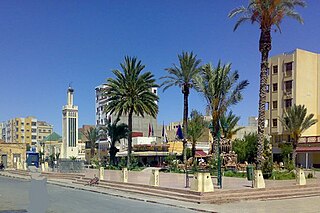
Guercif is a town and municipality in Guercif Province, Oriental, Morocco. It is the province's capital. According to the 2014 census the municipality had a population of 90,880 people living in 18,779 households.

The Berrechid–Beni Mellal expressway (A4) was inaugurated in 2015. It runs mainly parallel with the existing Route Nationale 12.
The Maghreb highway is a highway through the Maghreb region of North Africa. The highway is made up of an Atlantic main road, and a Mediterranean main road.

The Rabat Ring Road or Rabat Bypass is a Moroccan expressway around the capital Rabat.

French Morocco had from 1912 to 1935 one of the largest 600 mm gauge network in Africa with a total length of more than 1,700 kilometres (1,100 mi). After the treaty of Algeciras where the representatives of Great Powers agreed not to build any 1,435 mm standard-gauge railway in Morocco until the standard-gauge Tangier–Fes railway being completed, the French begun to build military 600 mm gauge lines in their part of Morocco French Morocco.

Oriental is one of the sixteen former regions of Morocco. It covers an area of 82,900 km2 and has a population of 1,918,094. The capital and largest city is Oujda, and the second largest city is Nador.
This page is based on this
Wikipedia article Text is available under the
CC BY-SA 4.0 license; additional terms may apply.
Images, videos and audio are available under their respective licenses.




















